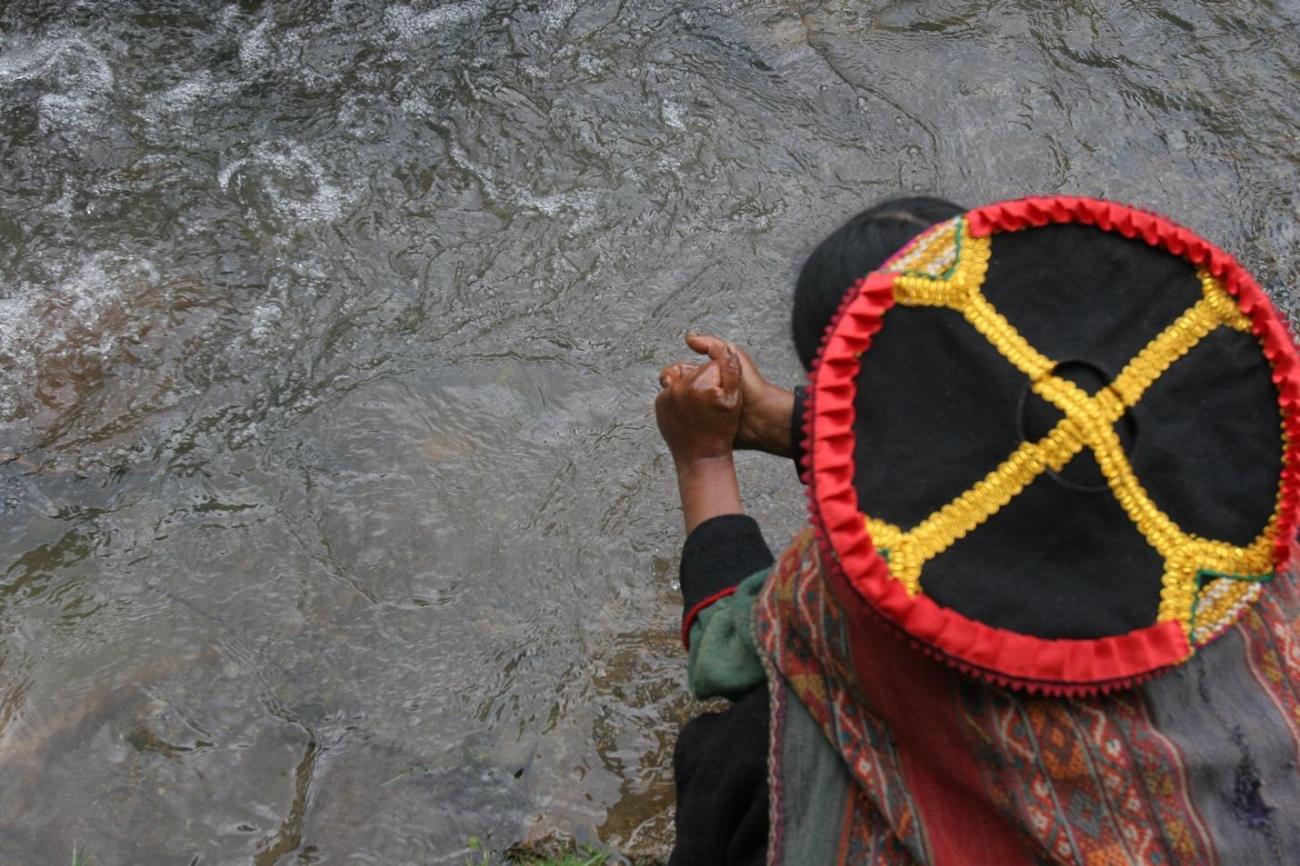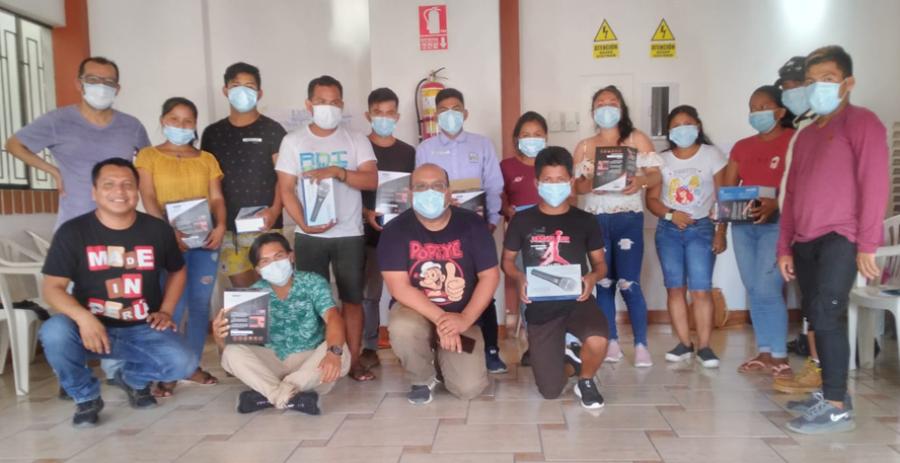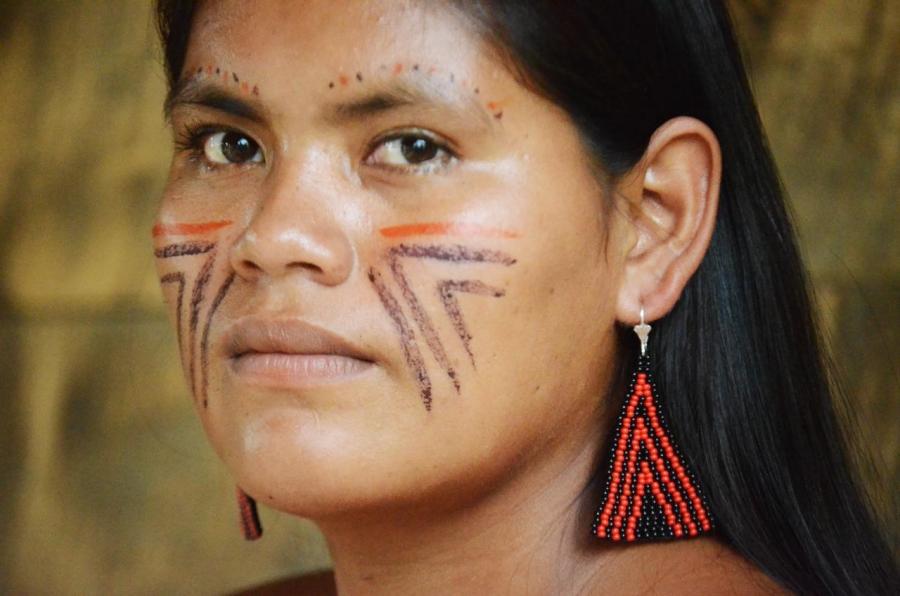
By Reynaldo A. Morales
In Peru and Latin America, Indigeneity remains troubled by radical politics of recognition that complicate the already untenable relations with Indigenous Nations and displaced societies that existed prior to the new Nation-States’ independences some 200 years ago. Urgent reform of constitutional frameworks that affect the lives of millions of citizens with unique and distinctive political and social identities is necessary to decolonize and establish a legitimate representational democracy.
Consideration of the geographical significance of Peruvian Indigenous Peoples can offer a powerful reference to Indigenous Peoples’ demographic significance in light of the country's struggle to depart from its colonial history. The Spaniards arrived in 1532, “and from that moment they started building a colonial society. [Their] greatest effort was to unmount everything that was there before. And that is how we arrived at 300 years of colonization,” explains Andres Alencastre, economist and former Minister of Agriculture (2022). “Independence took place, but as one that keeps preserving the social fractures that were established by the Spaniard colony,” he says.
Andres Alencastre, former Peruvian Minister of Agriculture 2022. Alencastre is an economist specializing in basins and water management.
Official estimates from the National Statistics System that conduct all censuses recognize only one-quarter of Peru’s population as Indigenous. Prior to the contemporary politics of self-identification, being Indigenous in Peru remained as an elusive category subject to subsequent redefinitions that served the interests of dominant elites. “The Indigenous ended up being a non-resolved issue,” Alencastre says. “The national theme at the dawn of the 20th century was the theme of the “Indio” (Indigenous), and therefore, the relationship between big farms, feudalism, and landlords with their diverse forms in the coast, center, and the rainforests. Everything had been organized in this particular way around the placement of the ‘Indio’ in regard to the other social classes that held all the State's power.”
The marginalization of Indigenous Peoples in the 20th century was constitutionally sealed in 1979 by the designation of entire ancestral Andean Nations as “agrarian cooperatives” with no political identity, rewritten as “commercial agrarian providers networks” at the national level. After declaring its independence from Spain, the Peruvian Aristocratic Republic (1895-1919) allowed feudal landlords to absorb the displaced surviving Indigenous Peoples along the coast and in the Andes. The remaining displaced Peruvians were assimilated into new urban centers, forced to adopt a new identity as Mestizos. In many young republics’ experiments in Latin America under colonial legacy, Indigeneity could be lost by being mixed or urbanized. Alencastre describes this as a consistent aggression from a western, Eurocentric world upon Amazonian and Andean worlds in continued resistance. “What we have here is the encounter, asymmetric [and] disproportionate between resistance and aggression,” he says.
The Peruvian Ministry of Agriculture Report of 2010 established that campesino communities controlled almost 24 million hectares of communal territories—an increase of 7 million hectares since 1998—while Amazonian Indigenous communities inhabited approximately 74 percent of the Amazonian territory, with some additional 277 still waiting for land titles. Additionally, five territorial reserves for communities in voluntary isolation occupy 2.8 million hectares, or 2.9 percent, of the Peruvian territory. Six territorial reserves have requested registration under Amazonian Indigenous management, representing an additional 4 million hectares. The Peruvian National System of Natural Protected Areas, which includes Amazonian Peoples and displaced Indigenous campesinos, reported 1.78 million hectares, or 1.8 percent of the Amazonian Region.
“At this moment, there are a series of conflicts related to the access of resources, and this type of conflict has no possible solution under the current Peruvian legislation,” says Vanessa Rodriguez, an attorney from Instituto del Bien Común. Rodriguez is an expert on environmental management and governance in the Amazonian region with an emphasis on fishing governance in the Amazon. “We have been working for a long time to update the process toward the policy for regulation of the fishing activities in the Amazonia [where] there is a great weakness,” she says. The tension over fish as a resource is a result of the lack of responsible regulation from Peruvian legislators to change the Amazonian fishing industry, which is run by commercial and mestizo fishermen. “Within that regulation there is not a single consideration of the Indigenous [cultural practices]. I would [argue] this is one the first and greatest gaps. There is no recognition of their unique cultures; there is no kind of recognition but of the [bare] minimum of the right of preference,” Rodriguez says. Peruvian legislation considers the right of preference for the Indigenous Peoples who live close to the fishing areas adjacent to their communities, unless there are competing exclusive and exclusionary rights. “So, from that point [of view], it starts with a vision that is absolutely discriminatory,” Rodgriguez says. “If [the Peruvian government grants] a right, an aquatic concession, [Indigenous Peoples’] right of preference vanishes.”
Demographic estimates from the last national population census of 2017 established that almost 6 million people (5,972,603) self-identified as belonging to an Indigenous or Native Peoples, representing just over one-quarter of the total population. Of these, 5,176,809 identified as Quechua and 548,292 as Aymara. The Amazonian population in the census who self-identified as Asháninka, Awajún, Shipibo, or other Amazonian Peoples totaled 197,667. An additional 50,000 self-identified as belonging to other Indigenous or Native Peoples, though these figures are widely regarded as an undercount.
In practice, the reported census numbers justify the government’s handling of constitutionally recognized Indigenous Peoples as a low priority in national policy and sustainable development. Peru has existed for just 201 years; it is a young Nation State still in formation. The term “Indígena” was only first used as explicit legal language in the Constitution of the new republic in 1920. Subsequent constitutional reforms enacted in 1970 and 1974 by the nationalistic military dictatorship of General Juan Velasco Alvarado ratified Indigenous communities’ lands and territories as “inalienable, indivisible, imprescriptible, and unseizable” in the best interest of a country that had been historically taken hostage by colonization and what amounted to feudalism in the first century of its creation.
The military coup that seized control of the Peruvian government for an entire decade took care of four targets in one fell swoop: it removed the problem of backward feudal landlords; secured the locking of Indigenous Peoples into an updated agrarian tributary role similar to feudal labor; demoted their nascent political identity by rebranding them as campesinos; and removed the threat of potential human rights consequences raised by the 1970 United Nations Sub-Commission on Prevention of Discrimination and Protection of Minorities that included Indigenous Peoples.
Excluding Indigenous Peoples’ political identities also has the effect of hiding in the open diverse layers of colonial implications, such as the loss of seats in national, regional, and municipal political governance, rejection of their legitimate autonomous governance, and support for dismantling collectively owned territories established by customary law, into providers of raw material, goods and resources to facilitate the shifting of capital to urban centers.
Peru ratified ILO Convention 169 in 1994, and thereby accepted the denomination of “Pueblos Indígenas'' (Indigenous Peoples). However internally this language was amended by the national constitution of 2005 to include the terms “campesino communities” and “Native communities,” grouped alongside Indigenous Peoples, to refer to an entire sector of the country’s population with no clear set of rights associated with or ascribed to them as collective wholes.
The Peruvian nationalistic military dictatorship coined internally the Spaniard term “campesino” to replace the political status of Indigenous Peoples. In the same year the resolution 4 B (XXIII) on August 26, 1970 recommended by the UN High Commission on Human Rights, a mandated complete and comprehensive study of the problem of discrimination against Indigenous populations to be undertaken. Acting on this recommendation, in May 1971 the UN Economic and Social Council authorized the Sub-Commission Rapport on the Human Rights and Indigenous Peoples at UN-ECOSOC. It is also important to note that in those same years, the governmental policy and constitutional structure was radically changed from supporting feudalism, land grabbing, and crimes targeting Indigenous Peoples as State policy. In 1970,under the flag of liberation, the revolutionary military coup led by General Velasco Alvarado redesignated Indigenous Peoples demoting their political identity as peasant cooperatives with a collective land title and removing them from fundamental political rights.
In the 1990s, Indigenous Peoples’ collective ownership and land tenure structures were again assaulted by the illegal constitution of 1992. Still in place in 2023, the constitution allows allotment, land privatization, and extractive operations on lands exclusively reserved for agriculture. Reversing this key constitutional problem remains one of the main arguments for a new referendum and constitution, demanded by emergent masses of Indigenous-identifying Peruvians in open resistance to a neocolonial State and in an active process of expanding the territorial sovereignty of the Nation State.
The official reports from the national census have never been accurate by design. This intentional obfuscation could be seen as a consistent problem of most republics across the world resulting from processes of colonization, colonialism, civil war, and revolutions confronting their State formation. Amidst these hegemonic processes, Indigenous Peoples’ responses to State reterritorialization require challenging the realities of their assimilation into new racial and ethnic identities and their disenfranchised geographical significance. Indigenous Peoples’ demographic and geographic majority has been distorted by waves of displacement, forced assimilation, and acculturation into marginal urban spaces. However, the violent protests of 2023 unveiled a nascent self-centering agenda of Indigenous Peoples. It is an affirmation of a demographic and geographic majority that is emerging today as a new, powerful force with the prospect of restoring democracy in a country whose last six presidents are in jail, and that has had five presidents in the last four years.
The narrative of development and modernity requires redefining Indigeneity in Peru beyond the typical class divisions that leftist guerrilla movements employed with devastating results during the 1980s and ‘90s. This redefinition needs to challenge the reductive lenses of social justice and economic mobility that conservative approaches suggest Indigeneity should be confined into. “There is still a long road ahead because the threats in the Amazonia are terrible,” says Jose Alvarez, longtime Director of Biodiversity at the Peruvian Ministry of Environment. “We have not only the normal challenge of administration of resources, but in addition, threats of foreign invasion, contamination, and climate change that worsens the situation of resource sustainability.” Alvarez invokes international legislation about local communities located in the Amazonia as a majority, occupying almost one-third of the entire Amazonian basin. However, these former Andean migrants have no rights to the territories they occupied, and the State only titles them a small allotment.
Alvarez says that Peruvian legislation has projected the figure that the Andean or coastal campesino can live off as a relatively small area. “The average size of a campesino allotment in Peru is less than five hectares. With five hectares, campesino farmers in the Amazon would die of hunger because they do not live exclusively off agriculture, which is the same for all Indigenous communities,” he explains. Alvarez has been an advocate for the rights of Amazonian Indigenous Peoples, following compliance with Article 8(j) of the Convention on Biological Diversity that establishes the obligation of the Peruvian government to protect and promote Traditional Knowledge and knowledge keepers. “Obviously they require a territory,” Alvarez says. “That is not recognized by the State, and it is a very serious problem because it is in those areas where people live and make use of the space beyond their crops. And you have hundreds, thousands of communities in the Amazonia in that situation.”
In this context, the demographic and geographical significance of Indigeneity in Peru offers complementary evidence for the case of constitutional amendments to the generic campesino (“peasant”) constitutional identity, to restore the political and legislative identity of Indigenous Peoples as right-holders, with titled territories, customary laws and governance systems, and with distinctive protections under international law and policy that are binding agreements that the Peruvian government has ratified.
--Reynaldo A. Morales is Assistant Professor at Northwestern University Medill School of Journalism, Media, and Integrated Marketing Communications. Faculty Fellow of the Buffett Institute for Global Affairs, and holds a joint Ph.D. in Education and Environmental Studies. He is a member of the International Indigenous Forum for Biodiversity at the UN Convention on Biological Diversity and the International Indigenous Peoples Forum for UN Framework on Climate Change Conference.
Jaime Rázuri is a renowned Peruvian and international photographer for AFP with two decades of work capturing political violence around the world.


